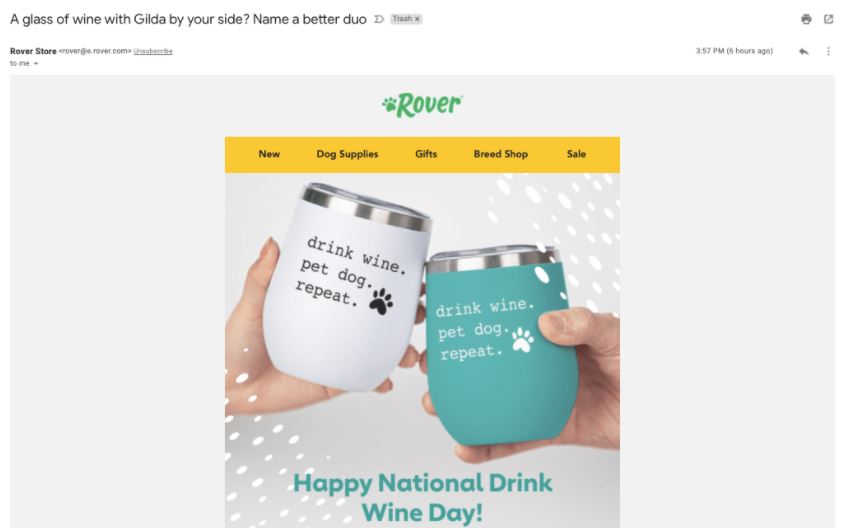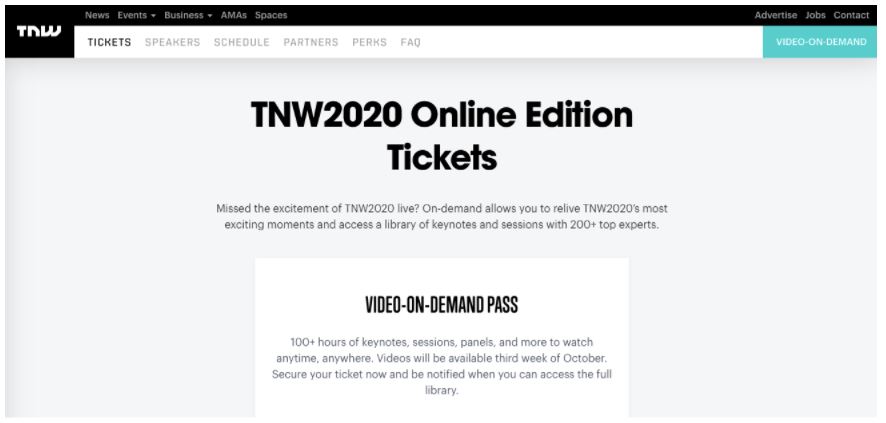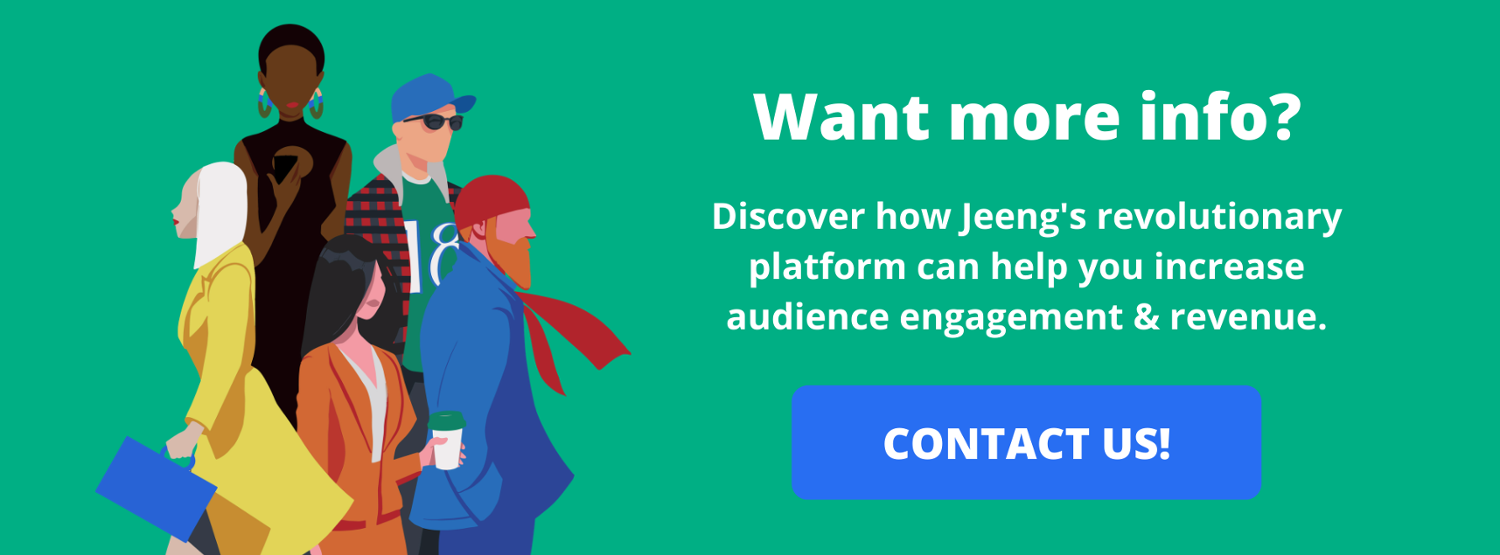As business philosopher Jim Rohn once said, “One of the greatest gifts you can give to anyone is the gift of attention.”
Both publishers and advertisers know this well. Customer attention is often hard-earned and worth the reward — especially because it’s in short supply. As studies have shown, the human attention span recently dropped from 12 seconds to just 8 seconds.
That’s not too surprising. We have more apps, platforms, and devices than ever through which to consume information and content. And that means more distractions, options, and “shiny new things” to give our attention to.
So, how do brands and publishers stand out from the crowds to earn that valuable customer attention — and ensure that it lasts beyond a fleeting click or share?
They can use these strategies.
Use first-party data to provide personalized content
First-party data is the most valuable kind of information you can collect about your customers. That’s because it comes directly from them — be it through an email signup form, app login, or survey.
Unlike third-party cookies, which are being phased out anyway, first-party data is gathered through your owned channels, so you know you’re getting clean, trustworthy information that you can keep. That means, it won’t get trapped inside Facebook or Google’s walled gardens, and you can use it to learn about your audiences, create unique segments, and build targeted campaigns.
Speaking of those campaigns, one of the best ways to activate first-party data is by fueling personalized ads and content. According to Innovid, 43% of consumers say ads should be personalized and 41% have made a purchase after seeing a personalized ad. How’s that for grabbing attention?
Just look at this email from pet sitting and dog walking app, Rover. It reaches customers with fun, personalized subject lines and copy that include their pet’s name. And the brand didn’t have to go scrounging across the Internet to find that information; it’s provided to them directly when people sign up for the app.

Host and participate in industry events
Want to grab people’s attention for 30 minutes or an hour? Engage them right in their homes or offices by launching virtual events like webinars, conferences, Q&As, or product launches and demonstrations.
Especially during a pandemic when people are stuck in their houses, these events can help them feel more connected to each other and your business. One virtual events platform even reported that their usage is up 1,000% since COVID-19 emerged.
Bloomberg Media, for example, transitioned its many in-person events to virtual events in 2020, gaining even greater participation from speakers and attendees from across the globe. The publisher also has a range of virtual events coming up in 2021, from a summit about cryptocurrency to a conference about global warming with executives from Walmart, General Motors, and TD Securities.

The Next Web also moved its annual conference online, featuring some of the biggest names and talks in tech. Those who missed it aren’t totally at a loss, either. Audiences can still buy a pass to access 100+ hours of keynotes and sessions on-demand — providing The Next Web with more of that oh-so-valuable currency known as attention.

Jeeng is in the virtual events game, too! Check out our roundtables with industry speakers chatting about hot topics like preparing for a world without third-party cookies and strategies for adapting to this “new normal” after COVID-19.
Launch push notifications and multichannel messaging
Social media isn’t the only place to garner customer attention. In fact, it’s not even a great option because your campaigns are tied up in constantly changing algorithms, data you can’t control, and audiences you don’t own.
Enter, a secret weapon: push notifications. Yes, those little alerts that pop up on your desktop browser or smartphone. Over 72% of consumers have enabled them, and it’s time for more publishers and brands to get on board with their benefits.
First of all, push notifications are guaranteed to be seen by your target audiences. From there, people can either read them and click through to your site or close them and continue with their browsing. Either way, you have a prime chance to grab attention in real time and make your message known.
Publishers, for instance, might use push notifications to promote trending stories, drive traffic to newly published content, send special offers based on audience interests, or increase sign-ups for those virtual events we mentioned above.
Build your email subscription strategy
There’s no doubt that email is the place to be for acquiring customer attention. It’s used by almost 4 billion people across the globe, and many spend up to five hours each day checking their personal and work emails. All you have to do is deliver what your audiences want to see. That is, content that matches their needs and behaviors, and reaches them at just the right frequency.
That’s why publishers like New York Magazine provide an array of options across topics and verticals. Under their Vulture publication alone, consumers can sign up for offerings like daily emails about the latest pop culture news, weekly newsletters about the streaming industry, and monthly roundups of book recommendations.

It’s no wonder major publishers like The New York Times and The Atlantic are prioritizing subscriptions. Because they understand the importance of using email to get in front of their customers and drive engagement.
The key to earning customer attention
The secret to attracting customer attention doesn’t lie in just one strategy or platform. Instead, it’s about reaching audiences across multiple channels, providing more opportunities for you to collect first-party data, launch personalized campaigns, and reach people where they’re already active and engaged.
That’s why Jeeng provides the tools for publishers and brands to build and take control of their own multichannel messaging strategies — whether you want to boost your email subscriptions with targeted newsletters, send real-time push notification alerts to new readers, or monetize your website with ads that actually address consumers’ interests.
The point is, you don’t have to choose. You can do it all and increase your chances of not just attracting customer attention, but sustaining it through high-quality campaigns.
Ready to get started? Contact us today to learn more.




